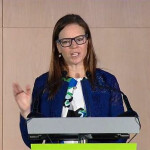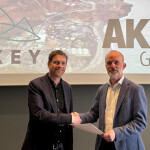China is aiming to assure consumers of its food exports with a spate of measures in the 12th five-year plan set to come into force later this year. The blueprint promises the establishment of a network of food-safety offices in each of China’s provinces, as well as a national food-safety risk assessment center, though no exact date has been set for the establishment of any of the agencies during the plan, which runs till 2015. The new authorities are the latest move by government here to prevent food-safety lapses among national food companies.
Yet while government is promising a further crackdown on local food producers, demand-side certification may have already forced the hand of the country’s export-focused seafood sector. Peter Marshall, CEO of seafood certifier Global Trust Certification, told SeafoodSource that “significant” growth in seafood-certification activity in China is driven by demand among U.S. retailers for suppliers to be certified. Global Trust certifies 39 seafood processors in China on behalf of the Global Aquaculture Alliance and the Marine Stewardship Council.
GT Cert inspectors assess Chinese facilities on criteria such as food safety and hygiene as well as waste management and labor standards. Marshall predicts a major increase in his firm’s activities in China, as Chinese seafood suppliers proactively seek certification, recognizing it as useful in driving overseas sales. Marshall points to the expanded seafood-sourcing policy recently announced by Walmart, the world’s largest retailer, demanding suppliers secure certification from recognized bodies like GAA.
While the mandatory HACCP certification remains a basic essential for seafood exporters shipping to the United States — suppliers apply for HACCP through two Chinese government agencies, the China Inspection & Quarantine (CIQ) and General Administration of Quality Supervision, Inspection and Quarantine (AQSIQ) — Chinese seafood exporters also anticipate a new trend of certification, alongside tighter supervision by Chinese regulators.
Landy Chow, director of China sourcing at seafood exporter Siam Canadian, said local government inspections are tightening, but the fragmented nature of the local fish-farming sector means seafood processors will continue to rely on collections of small, poorly monitored farms for fish.
While the Chinese government has attempted to tighten inspection, random CIQ inspections of most farms are usually limited to twice a year due to the sheer number of such farms.
“A shortage of land in China means it’s hard to consolidate farming operations into really big fish farms,” explained Chow.
Certification will be vital to ensure higher standards among seafood farmers and processors in China, where some 4 million fish farmers have developed a track record for cutting corners through over-dependence on chemicals. A U.S. congressional hearing in 2008 heard that producers often overuse anti-bacterial and anti-fungal agents to compensate for overcrowded fish ponds and cages. Among the agents used are malachite green, gentian violet and chloramphenicol, all considered potential carcinogens.
There are signs, however, that the situation has improved. In the past three to four years, the government attitude toward seafood contaminants has “changed dramatically,” said Sergey Nikolenko, who runs the Shanghai offices of U.S.-based Lotus Seafood. Nikolenko, who oversees exports of processed and frozen fish to the Russian market, explained that Chinese authorities have screened and listed 300 facilities that alone are approved for export to Russia.
“Russian vets send reports on all issues to China CIQ, and the CIQ has been really tough on such factories,” he said. The tendency is the same for other export markets such as the United States, suggested Nikolenko. “The Chinese government does its best to leave the image of being a ‘low quality, cheap price’ producer in the past.”
Chow of Siam Canadian expects demand by U.S. retailers for additional certification will weed out the number of Chinese seafood exporters seeking to tap the U.S. market. Yet Chinese seafood exporters are also hedging their bets by targeting markets where demands for certification remain less stringent.
While emphasizing that his firm has secured HACCP certification, Liyou Lu at Huatong Aquatic Co. Ltd. in southeasterly Zhejiang province has reduced shipments of mackerel and monkfish to the United States and European Union and switched its focus to hopeful markets in southeast Asia, including Singapore and Indonesia. Southeast Asia is the firm’s fastest growing market, explained Liyou.
“Certification isn’t such an issue for these markets, particularly since we have secured HACCP already,” he added.
Stringent certification requirements are also a reason for other exporters to look to new markets. Asian Perfect Food, a Beijing-based seafood-trading house which has been supplementing seafood shipments to the United States, and Europe with an increasingly promising African market. Demand for Chinese scallop, shrimp, tilapia and sole — which beat local African product on price — is rising fast in Nigeria and South Africa, said Sophia Qi, the company’s marketing manager. The certification procedure by comparison, is “very simple” by comparison to Western markets, she added.






